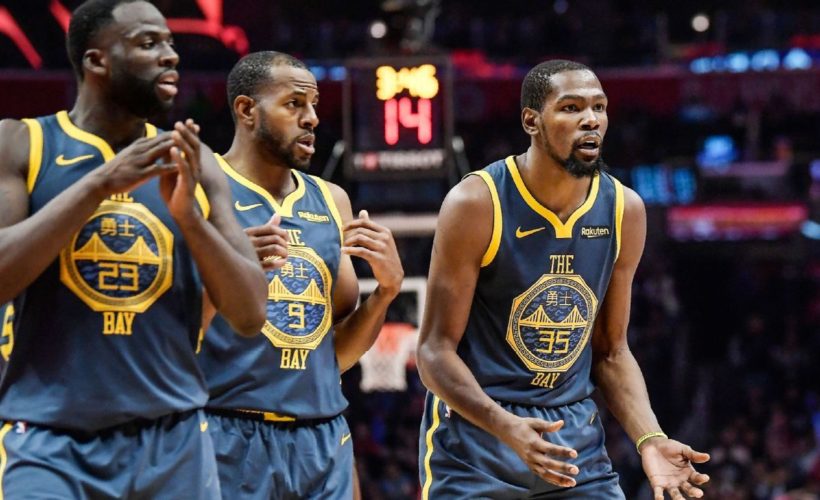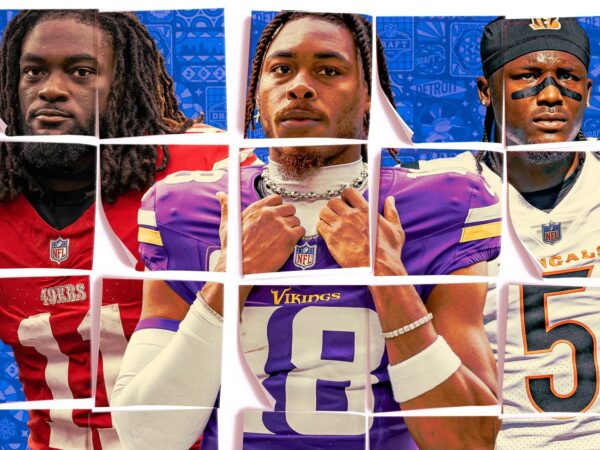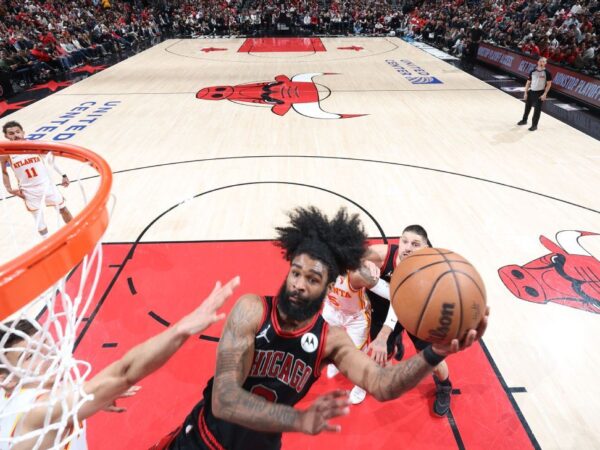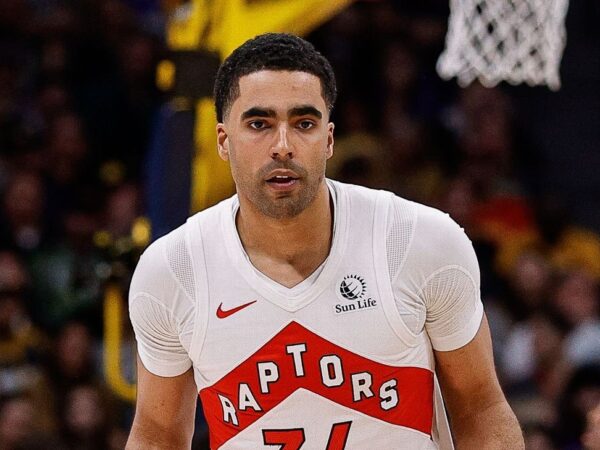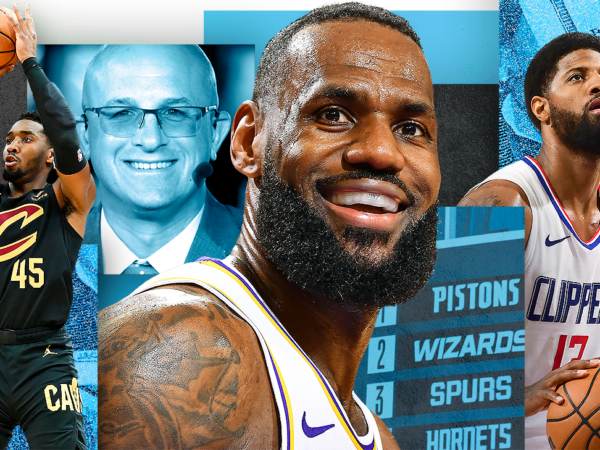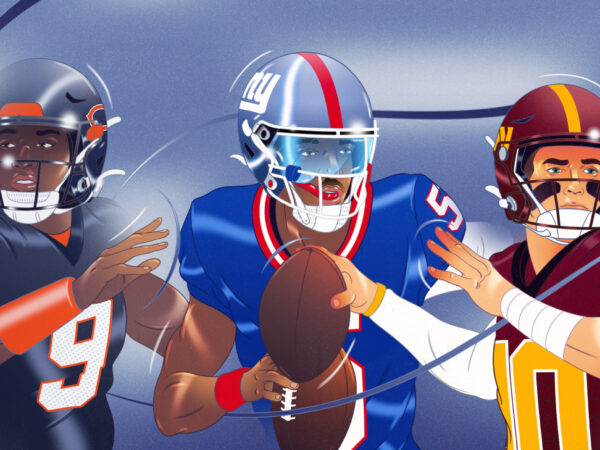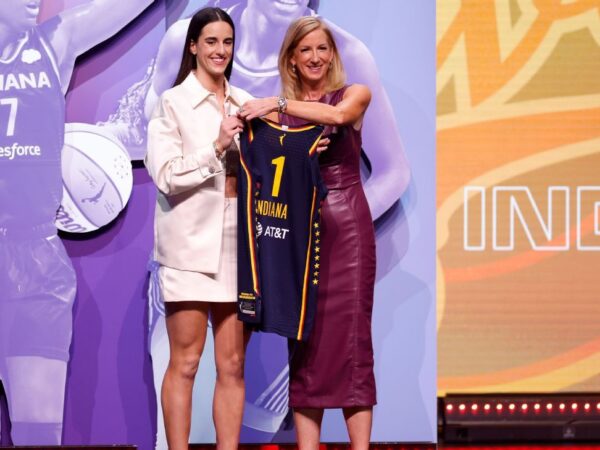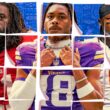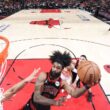Kevin Durant was never supposed to be on the Golden State Warriors. It was an accident: A one-time-only salary-cap spike left a 73-win team with enough space to add perhaps the world’s second-best player. The NBA had seen Big 3s before. It had never seen a Big 4 like this.
All four stars were still younger than 30 after they won their first title, obliterating the league across a 15-1 postseason. The Warriors looked poised to be the greatest dynasty since Michael Jordan‘s Chicago Bulls.
Only two years and one championship after that 2017 crown, that team is gone. Durant plays for the Brooklyn Nets, which is a thing you have to say out loud a few times before you believe it. He is recovering from a devastating injury; Klay Thompson is too. Andre Iguodala plays for the Memphis Grizzlies.
Maybe it is just this hard to sustain greatness. Maybe this is the shelf life of a championship team now. The grind — 100-plus games every season — is exhausting. The LeBron James-era Miami Heat lasted four seasons, until everyone seemed old, weary or ready to move on. Superstar contracts make it hard to build depth. Those contracts are short. Stars win titles, then seek other kinds of validation.
Durant spent part of the summer after that first championship working with Steve Nash, a Warriors consultant. Nash was struck by Durant’s despondency.
“He didn’t have a great summer,” Nash told me last year. “He was searching for what it all meant. He thought a championship would change everything and found out it doesn’t. He was not fulfilled.”
The Warriors enjoyed having Durant, and he enjoyed playing in Golden State. Still: They never found a permanent comfort zone together. Teammates and coaches looked for hopeful signs. When Durant and Stephen Curry sipped wine together for hours after a team dinner in Denver during Durant’s first preseason with Golden State, coaches smiled. The two stars were getting to know each other, getting over the awkward stage.
But Durant would withdraw. He grew so quiet during the middle of the 2017-18 season that coach Steve Kerr summoned him to lunch in Portland before the All-Star break. “I don’t want to lose you,” Durant remembered Kerr telling him.
“He had been drifting a bit,” Kerr told ESPN after the 2018 NBA Finals. “He’s vulnerable. I felt the need to reconnect.”
There was a natural tension — “stylistic tension, not personal tension,” Kerr said then — between Durant’s approach and the Warriors’ beautiful game, even if Durant had the savvy and skill to meld them. That tension came to a head during the 2018 Western Conference finals, when the Houston Rockets‘ switching defense jammed Golden State’s motion and coaxed the Warriors into more one-on-one play. Durant slumped. Critics howled. The Warriors almost lost.
But they didn’t lose. On the flight back from Houston after Game 7, Durant sat next to Bob Myers, Golden State’s president of basketball operations, and declared, “I have never felt more a part of the team,” Myers recalled last year.
For whatever reason, that feeling could never last. Some of it was probably Durant’s (understandable) decision to cycle between short-term deals. Maybe some of the key personalities didn’t hit it off like they hoped — as Marcus Thompson of The Athletic detailed here.
Maybe some of it was baked into the unique four-star construction of the team. The Warriors were too good for observers to discuss anything but their internal dynamics. Even well-meaning attempts at that discussion could grow grating for the subjects of it. Maybe it was hard for Durant to feel a part of the Warriors if all anyone could talk about was what he had done to the Warriors — to the team’s style, to its identity, to the legacy and standing of its stars.
It surprised almost no one that he left. Some within the team worried during parts of 2017-18 that he would depart after that season.
Perhaps all of that is why Iguodala’s departure felt so much more like the end of an era than Durant’s. Golden State began its ascent before Iguodala. He bore witness to it in 2013, when the sixth-seeded Warriors shot and pranced by his Denver Nuggets in the first round. Iguodala saw something in those young Warriors, and they saw something in him.
Golden State pitched him in free agency that summer, even though they didn’t have enough cap space. They even prepared a promotional DVD. He waved it away. Get the space and I’ll come.
Myers still calls it the most stressful deal of his career. He canvassed the league looking to dump money. Joe Lacob, the Warriors’ governor and Myers’ boss, was away at a vacation home in Montana with limited cell phone reception when Myers found a partner: the Utah Jazz, demanding two unprotected first-round picks and $3 million in cash. Lacob was unreachable. His son, Kirk, the team’s assistant general manager, told Myers to do the deal anyway.
After one season as a starter ended in a disappointing first-round loss, Kerr, the team’s new coach, sold Iguodala on a bench role in 2014-15. It became the role of Iguodala’s basketball lifetime — the job that allowed for the purest expression of his beliefs about what the game should look like.
When he was an anointed young star with the Philadelphia 76ers, Iguodala would watch highlights of Kobe Bryant and Jordan, old teammates recalled; they were the sort of alpha scorers who franchise stars were supposed to emulate. Iguodala tried. He wasn’t good enough at it to lead a team anywhere serious. It wasn’t him.
He was much more comfortable blending in with the Warriors’ ethos of selflessness, speed and aesthetic beauty. He didn’t just blend with it. He elevated it.
There was nothing in the NBA like the Warriors in full flight: two genius playmakers, Iguodala and Draymond Green, sprinting up the floor, eyes darting side to side, searching out the all-time great shooters orbiting them. The Warriors became the Warriors only when Iguodala strolled onto the floor in place of a lumbering center: the Death Lineup that turned the 2015 Finals, when Iguodala was named MVP, and then the Hamptons Five.
The game looked different, sounded different. You didn’t watch it or analyze it as much as let it wash over you. The combined creativity in those lineups took the game to rare places. Few players anywhere are more creative than Iguodala. He sees things before anyone else and imagines possibilities few contemplate.
On defense, he out-thinks the world’s best players — moving in concert with them, arriving in places before they expect him. We all remember Thompson’s barrage of 3s that saved Golden State in that epic Game 6 in Oklahoma City in 2016. Don’t forget Iguodala’s crunch-time defense — how perhaps the greatest swipe-down steal artist of the last 15 years pulled the trick on both Durant and Russell Westbrook to short-circuit late Thunder possessions.
“He’s as smart as any player I’ve been around,” Kerr told ESPN in March, and when you pause to consider who Kerr has been around, that statement really means something.
Iguodala gave the Warriors some stealth swagger. He occasionally tried risky passes just to try them, even when something simpler would do, and even if the habit — in Iguodala, but also in Curry and Green — drove Kerr mad. After especially fancy passes, he smiled at the bench or gazed at his hands in mock astonishment. Upon landing after dunks, Iguodala paused in mid-crouch, arms spread, eyes wide open in faux shock: Oh, you forgot I used to do this?
1:09
Richard Jefferson explains that Andre Iguodala was likely so outspoken about Golden State’s medical staff because he knew he was going to be traded.
Now he’s gone, and the Warriors will never be the same. If (when?) the Warriors waive Shaun Livingston, the Curry/Thompson/Green trio will be all that remains from their first championship team. That trio won at historic levels before Durant. They went 34-4 over three seasons without him before the Finals against Toronto. That trio can still win — big. Golden State’s Plan A is to regroup around it. Thompson and Green are not yet 30.
But they did all that pre-Durant winning with in-their-prime role players supporting them. Iguodala was the best of them. Golden State has attempted to start that cycle again by effectively replacing Iguodala with D’Angelo Russell in a complicated sign-and-trade deal.
(On a side note, it is a trade that makes you appreciate what the San Antonio Spurs accomplished in their draft-day deal for Kawhi Leonard. Before things went haywire, the Spurs actually had done it: plucked a future franchise superstar who could extend the team’s time among the elite toward the 30-year mark.)
Acquiring Russell came at enormous cost. Golden State is trading one future first-round pick to Brooklyn to facilitate the deal, per the reporting of Adrian Wojnarowski. That’s right: The team losing Durant is trading a pick to the team getting Durant. Acquiring Russell in a sign-and-trade triggered a hard salary cap for Golden State just shy of $139 million. With every incumbent on the books, hitting that cap was unavoidable.
They had to trade someone. They chose Iguodala. The teams with space understood they held leverage. The Warriors sent a lightly protected 2024 first-round pick to Memphis along with Iguodala.
It is a huge gamble that Russell will be worth more than Iguodala and those picks in replenishing the talent around the franchise founding fathers.
Russell is surely not the player the Warriors would have chosen for this burden. He was the one available to them. It is hard to see how he fits all that well with Curry and Thompson beyond the fact that any ambulatory NBA player fits with the two greatest shooters in the history of the sport. Russell ran more pick-and-rolls than almost anyone else in the league last season. That does not mean it is a great idea to give Russell the ball and encourage him to jack floaters as Curry runs around. (It is a bad idea.)
Russell is a good enough shooter to play much more off the ball. That is the sort of hybrid role coach Luke Walton envisioned for Russell early in his stint with the Los Angeles Lakers — jitterbugging the pick-and-roll on one possession, popping open behind a flare screen on the next.
He lost some of that off-ball dynamism with the Nets. Playing next to Curry (and, later, Thompson) will reanimate that part of Russell’s game.
Russell can sop up minutes and possessions while Thompson recovers from a torn ACL. Golden State will not have to run Curry into the ground. The Curry/Russell/Thompson trio could be powerful on offense if Russell speeds the pace of his game in the half-court. He favored a laborious, if effective, on-ball style in Brooklyn. He will need to adjust to the improvisational read-and-react system of winks and cuts and give-and-go plays Thompson and Curry prefer.
If he does — and Russell is skilled enough to do it — those three could work as the backbone of a good offense. On defense, it’s hard to see how Russell, Curry and Thompson can form 60% of effective lineups against top competition. Who defends point guards now? Is Thompson a full-time small forward?
Fit is almost beside the point. If it works better than anticipated, great. But the end goal was probably to turn Durant into a player the Warriors could trade for other players — and picks that represent the chance to find such players — that fit more cleanly around the Curry/Thompson/Green foundation. They can trade Russell again on Dec. 15. The Minnesota Timberwolves will still covet him then; Robert Covington would form the starting point of a very nice package. Other teams will need a point guard.
There was another path: Let Durant walk for nothing; keep Iguodala; use most of the midlevel exception to build out the 2019-20 roster; and hoard every future draft pick. The Warriors also could have netted a trade exception big enough to fit almost any player in the league. (As is, they likely are getting a $17 million trade exception in the Iguodala part of the deal.)
At first glance, I preferred that path. Golden State paid at the top of the market in draft compensation to shed Iguodala. They gave Russell the max as his market was drying up. I am lukewarm on Russell’s ability to get any better unless he changes his shot selection.
But you can understand why the Warriors chose Russell. Trade exceptions usually snare expensive players on the decline. The “keep Iguodala” route would not have netted any real cap flexibility — not now, and not later, with Green one year from cycling onto a fat, new contract. Golden State’s best methods of grabbing a good young player in that scenario would have been trading one core star, or hitting on a masterstroke late in the draft. The chances of such a player developing in time to absorb some of the load from Curry, Thompson and Green before they decline are remote.
Thompson’s injury changed the calculus. The Warriors needed someone right now to play a ton of minutes — more than Iguodala can — at a guard spot. Golden State likely isn’t contending this season. Iguodala has little purpose on a non-contending team.
Even with this more expensive Russell roster — and that hard cap — the Warriors were still able to re-sign Kevon Looney to a three-year, $15 million deal. They will have almost only minimum-level deals left to fill the roster, but it’s not as if the alternate Iguodala/Looney/midlevel exception scenario is yielding meaningfully more present-day on-court talent than the Russell/Looney/minimums path Golden State chose.
Two rival executives who didn’t like the Russell deal framed the debate this way: Couldn’t the Warriors have gotten someone better if they had canvassed the league with a package of Iguodala and two picks? Maybe? The most sensible destination would be a win-now team in need of cap relief, or stagnant mid-tier teams hunting a pivot. Danilo Gallnari? DeMar DeRozan? Clint Capela? One of Miami’s good young players — the best of whom (Josh Richardson) they just agreed to trade for a legit star in Jimmy Butler? Kyle Lowry on an expiring deal if Kawhi Leonard bolts Toronto?
It’s unclear if any of those guys would have been gettable. How many turn the 2019-20 Warriors back into contenders and carry more long-term trade value than Russell?
There was no ideal path once Durant left. Time will tell if this one works. It will come down to whether Russell is worth more — in his play or what the Warriors trade him for — than those two picks. There are even hypotheticals in which the Warriors trade Russell and Thompson — or Russell and Green — for god knows what.
The changes just felt so abrupt: Durant down, Thompson down, Durant out, and then Iguodala gone in exchange for someone never connected with the Warriors.
Tomorrow is always coming in the NBA, even when it seems a long way off.
Source:ESPN

